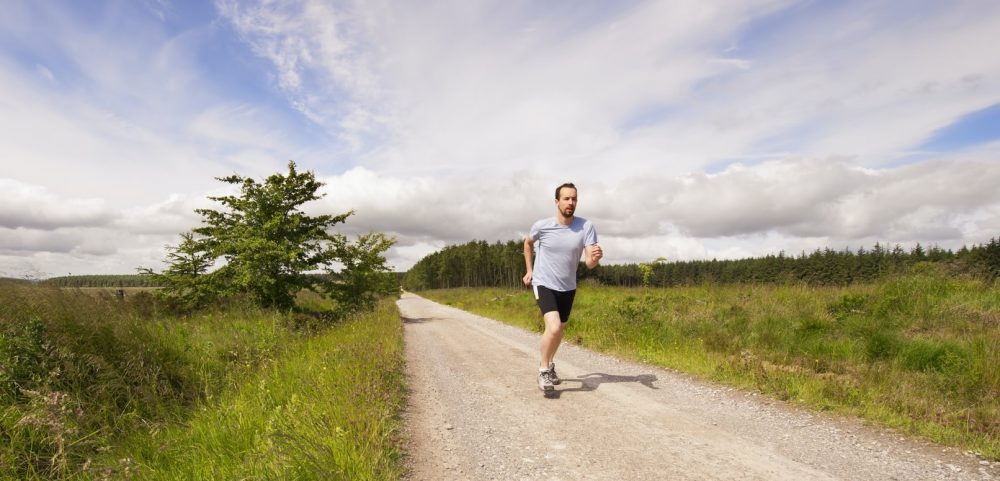
 Prithvi Dixit (left) is a second year medical student at Imperial College London, UK, with a keen interest in in physical activity for both himself and his future patients.
Prithvi Dixit (left) is a second year medical student at Imperial College London, UK, with a keen interest in in physical activity for both himself and his future patients.
David Salman (Right) is an Academic Clinical Fellow, Department of Primary Care and Public Health / MSk lab, Imperial College London, UK. He is on Twitter: @MSkLab1
Being physically inactive increases risks to physical and mental health from a wide range of diseases, and has effects on life-expectancy at a similar level to other major risk factors such as cigarette smoking or obesity.1 However, there are multiple barriers that prevent people from incorporating physical activity (PA) into their daily lives, from individual to societal factors.2 At an individual level, finding the time to be physically active, when dealing with every other aspect of a busy life such as work, studying and childcare, appears to be a major problem.
Understanding how physical activity can be incorporated into daily life is beneficial not only for our own health, but will also allow us to better advise our patients.
As clinicians and medical students, understanding how physical activity can be incorporated into daily life is beneficial not only for our own health, but will also allow us to better advise our patients. Here, we have collated together some of the evidence to help answer common questions regarding PA, and how to fit it into a busy schedule. As we approach 2021 in the midst of a pandemic and multiple lockdowns, we hope that this summary will help us all, patients and clinicians, do more in a way that is practical and realistic.
What counts as physical activity, and how much is enough?
PA is any movement of the body where energy is expended, and is, or should be, part of everyday life. Think of things such as: going up stairs; walking to the shops; or doing DIY, or garden and household tasks. Exercise is PA that is planned, structured, and intended to improve physical fitness. Current UK public health guidance for adults is for 150 minutes of PA at a moderate intensity (where the breathing rate increases but it is easy to talk) or 75 minutes of vigorous intensity PA (the rate of breathing increases and it is difficult to talk), per week. Activities which strengthen muscles (such as carrying shopping bags, yoga, or weighted exercises) are also recommended on at least 2 days of the week.3
An important consideration is how this time is accumulated. A study of accelerometer data from individuals between 2003-2006 and subsequent death records found that mortality risk was reduced for individuals even if they accumulated their moderate-vigorous PA in bouts of 5-10 minutes.4 When guiding individuals (and ourselves) to be physically active, it is important to be realistic and practical. Trying to do 5-10 minutes of an activity is going to be a much more realistic proposition to many people at the end of a busy day, that attempting to do an hour of activity. Similarly, doing the minimum recommended level of PA over 1-2 sessions in a week (the Weekend Warrior effect) appears to be sufficient to reduce mortality risk.5
Something is better than nothing.
Can you do too little or too much physical activity?
Something is better than nothing. A US study from 2015 of pooled data from 6 cohort studies found that those performing less than guideline amounts of PA in their leisure time still had a 20% lower risk of mortality when compared to those performing no PA in leisure time.6 Moreover, there was a 37% lower risk in those doing 2-3 times minimum recommended amounts, and there was no evidence of harm in those doing 10 times minimum levels. Therefore, people should be guided that there is still some benefit from even a small amount, and if they want to do more, they can be encouraged to do so.
Can it be too late to take up physical activity?
One concern of many people is that, having been inactive for a prolonged period of their lives, are they then taking up activity too late in their lives for it to be of benefit? One observational study found that men who increased their leisure-time PA from a low level to moderate or high had a reduced risk of death that men who maintained a low degree of PA.7 Another study of 9777 men who had two examinations approximately 5 years apart found that those who improved from unfit to fit had a 44% reduction in mortality compared to those who were unfit at both examinations, both from all causes and from cardiovascular disease.8 It seems to be that maintenance of PA over time is associated with lower cardiovascular risk, rather than a single baseline measure of PA.9
Can high intensity interval training (HIIT) be helpful?
High intensity interval training (HITT) involves doing short bursts of high intensity exercise followed by periods of rest. A 2020 study randomised adults of mean age 73 years to 5 years of either: two sessions per week of HIIT; moderate intensity continuous training (MICT); or guideline levels (control). Those doing HIIT or MICT did not show any difference in all-cause mortality when compared with those in the control groups. However, when analysed separately, HIIT showed a non-statistically significant reduction in all-cause mortality when compared with controls.10 Therefore, it is perhaps too early to suggest that HIIT carries a mortality benefit when compared with other forms of exercise, but it should still be considered as a potential option, particularly where it is a feasible and practical form of exercise for some.
“As a medical student, I often find I am only left with 30 minutes at the end of the day to do any form of physical activity. Considering time needed to warm-up, and cool down, conventional MICT would not be feasible. However, being opportunistic and taking advantage of techniques such as HIIT has allowed me to exercise in a realistic timeframe. I find HIIT to be far more enjoyable than MICT, and there isn’t as much stress about spending too much time away from revision and falling behind. “As a doctor, I will feel more comfortable advising my patients on topics I have personal insight in.”
Something as simple as finding a straight road/path and sprinting from end to the other with short rest intervals is all you need to do HIIT. Personally, I use a 50m track that is measured, sprint from one end to the other, jog back and repeat.
As a doctor, I will feel more comfortable advising my patients on topics I have personal insight in. With the obesity rate increasing in the UK, it is important that, as future doctors, we are competent in guiding patients towards a healthier lifestyle and to be more physically active. Having used HIIT as my primary source of physical activity for the past three years I feel confident in advising my patients in the future to consider using HIIT in their regimes.”
Prithvi Dixit
How can I guide patients to be more physically active?
A modified 3As approach can be a helpful way of opportunistically introducing a concept related to lifestyle change into a consultation.11 This involves Asking for permission to discuss PA as part of a consultation, and gauging current levels of PA. Assess their perspectives of PA, and any goals they may have. Advise by providing information and signposting to resources, such as those discussed below. A diary can be helpful to keep track of what they are doing, and to identify further opportunities to introduce PA.
“I try and help patients set goals that are realistic and achievable when trying to fit physical activity into their daily lives.”
“I try and help patients set goals that are realistic and achievable when trying to fit physical activity into their daily lives. For example, brushing our teeth for a few minutes at each end of the day is something that most people do, and is an example of an activity that is protective and beneficial for health, and is ingrained into the daily culture of most people across the world. So, is it feasible to try and do a few minutes of activity at each end of the day in the same way? A few minutes of a HIIT routine, a yoga video once the children are in bed, a few minutes of stretching: these are all realistic for most people on at least a few days a week. Similarly, fitting in activity during a commute, such as getting off the bus a stop earlier to walk, is a potentially realistic option. Setting goals that are hard to achieve, such as getting up at 5am to go for a run, may simply be too hard to sustain consistently for most people.”
David Salman
Are there any resources to help me guide patients?
There are many resources available to guide conversations during a consultation, such as the CMO infographics and Moving Medicine, and to help people increase PA during their daily lives, such as PHE OneYou, and Couch to 5k.
Do what you can, when you can.
Resource Websites
Chief Medical Officer (CMO) physical activity guidelines Physical activity guidance across the lifespan, including for older adults, children and during pregnancy/post-partum. https://www.gov.uk/government/publications/physical-activity-guidelines-infographics
Moving Medicine An online resource to help guide discussions regarding physical activity for healthcare professionals https://movingmedicine.ac.uk/
Couch to 5k A graded programme to help people start running in a gradual and phased way https://www.nhs.uk/live-well/exercise/couch-to-5k-week-by-week/
OneYou Guidance on physical activity https://www.nhs.uk/oneyou/
Helping older people stay active at home: Chartered Society of Physiotherapists (CSP) Exercises to help older adults to stay active https://www.csp.org.uk/public-patient/keeping-active-and-healthy/staying-healthy-you-age/staying-strong-you-age/strength
Take-home messages
- Do what you can, when you can: accumulating guideline amounts of activity in 1-2 sessions across the week, or in bouts of 5-10 minutes of activity, still counts and will reduce mortality risk.
- Even if you cannot reach recommended amounts, it will still be of benefit.
- HIIT can be a feasible way of introducing intense physical activity into short time frames.
- A modified 3As framework can be helpful for introducing conversations about physical activity into consultations.
References
1. Lee I-MM, Shiroma EJ, Lobelo F, et al. Effect of physical inactivity on major non-communicable diseases worldwide: An analysis of burden of disease and life expectancy. Lancet 2012; 380: 219–229.
2. Bauman AE, Reis RS, Sallis JF, et al. Correlates of physical activity: Why are some people physically active and others not? The Lancet. Epub ahead of print 2012. DOI: 10.1016/S0140-6736(12)60735-1.
3. Davies SC, Atherton F, McBride M, et al. UK Chief Medical Officers’ Physical Activity Guidelines. 2019.
4. Saint-Maurice PF, Troiano RP, Matthews CE, et al. Moderate-to-Vigorous Physical Activity and All-Cause Mortality: Do Bouts Matter? J Am Heart Assoc; 7. Epub ahead of print 22 March 2018. DOI: 10.1161/JAHA.117.007678.
5. O’Donovan G, Lee I-M, Hamer M, et al. Association of “Weekend Warrior” and Other Leisure Time Physical Activity Patterns With Risks for All-Cause, Cardiovascular Disease, and Cancer Mortality. JAMA Intern Med 2017; 177: 335.
6. Arem H, Moore SC, Patel A, et al. Leisure Time Physical Activity and Mortality. JAMA Intern Med 2015; 175: 959.
7. Schnohr P, Scharling H, Jensen JS. Changes in Leisure-time Physical Activity and Risk of Death: An Observational Study of 7,000 Men and Women. Am J Epidemiol 2003; 158: 639–644.
8. Blair SN, Kohl HW, Barlow CE, et al. Changes in Physical Fitness and All-Cause Mortality: A Prospective Study of Healthy and Unhealthy Men. JAMA J Am Med Assoc. Epub ahead of print 1995. DOI: 10.1001/jama.1995.03520380029031.
9. Bauman AE, Grunseit AC, Rangul V, et al. Physical activity, obesity and mortality: Does pattern of physical activity have stronger epidemiological associations? BMC Public Health 2017; 17: 1–12.
10. Stensvold D, Viken H, Steinshamn SL, et al. Effect of exercise training for five years on all cause mortality in older adults—the Generation 100 study: randomised controlled trial. BMJ 2020; 371: m3485.
11. Haseler C, Crooke R, Haseler T. Promoting physical activity to patients. BMJ 2019; 366: l5230.
Featured photo by Jenny Hill on Unsplash






